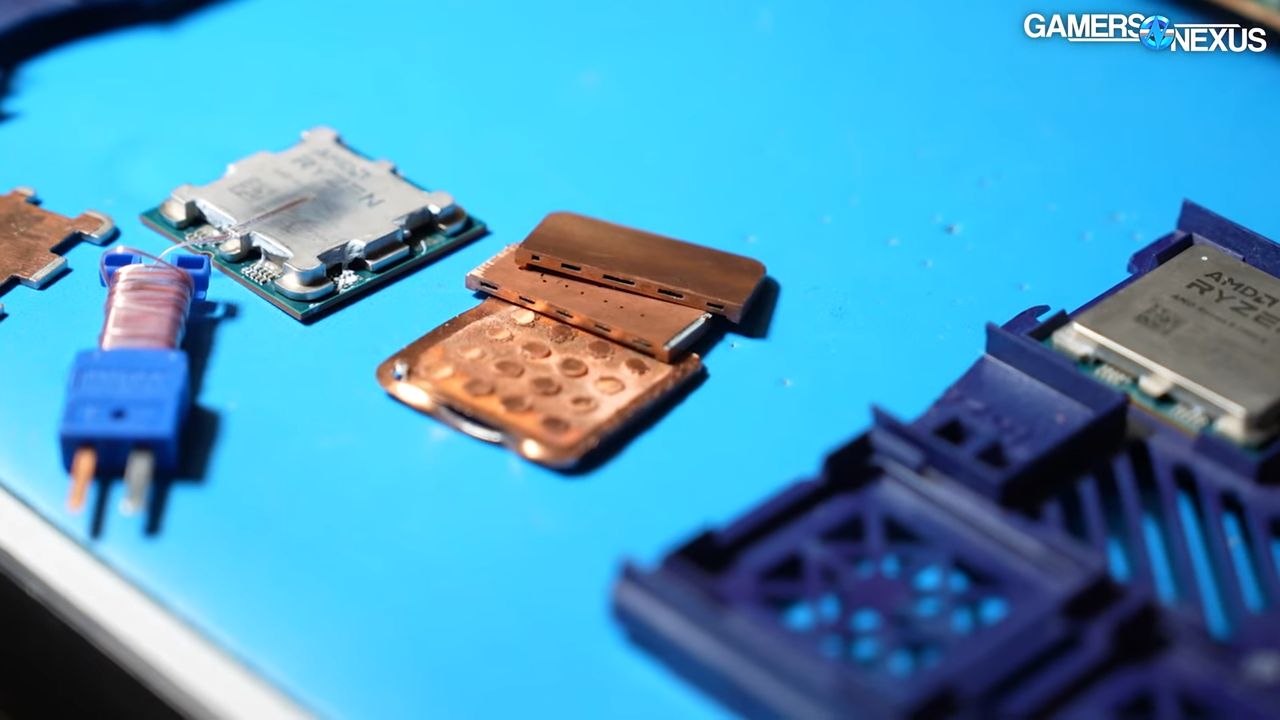AMD Had Ryzen 7000 Prototype CPUs With Vapor Chamber Cooling Embedded Within IHS
AMD initially planned to introduce a unique vapor chamber cooling technology into its Ryzen 7000 CPU lineup to replace the traditional IHS but decided against it for several reasons.
AMD Vapor Chamber Design For Ryzen 7000 CPUs Went Through Thorough Testing; Idea Dropped Off Due to High Costs
In a visit to AMD's Austin Headquarters, GamersNexus highlighted several labs and testing departments of the company. The coverage was entertaining, but one intriguing highlight was AMD's plans to include a vapor chamber into its Ryzen 7000 CPUs for cooling. Still, the idea was scrapped due to its feasibility.
A quick recap, AMD's Ryzen 7000 CPUs employ what is known as an "Integrated Heat Spreader," a flat metal plate that sits on the CPU die to aid the thermal dissipation process between the die and the cooling solution. A vapor chamber is a technology often seen in several current-gen graphics cards. It consists of a sealed chamber made of copper.
Inside the chamber is a small amount of liquid, typically water or a coolant. The liquid evaporates into vapor when the processor heats up, absorbing heat. The vapor then moves to cooler chamber areas, condenses into liquid, and releases the absorbed heat. This cycle continues, effectively transferring heat away from the source.
Image Credits: GamersNexus
AMD created a very distinctive design for its vapor chamber for the prototype Ryzen 7000 CPUs, with a porous chamber to vaporize the coolant. The chamber was a bit extended than the IHS and was flatter to allow better heat dissipation. Moreover, there was a vacuum section alongside the chamber, where the coolant was located. AMD's representative claimed they were inches close to making this a reality. However, this technology came with a few downsides.
Image Credits: GamersNexus
First of all, although the vapor chamber technology looks cool, it comes with an increased manufacturing cost mainly due to the complexities within the design. Moreover, the design brought little changes in the temperature difference (vs the IHS). A slight 3°C temperature change was noted, which isn't worthwhile since this could be easily achieved with a decent CPU cooler. AMD had been working on the plan since pre-COVID and made continuous modifications within the design.
We probably won't see the vapor chamber cooling on AMD Ryzen 7000 CPUs or future chips unless a more modified version with better performance and associated costs is developed. The video by GamersNexus is indeed interesting, and it shows the thorough testing process done by the company before releasing a product into the mainstream market.
Source: Wccftech


